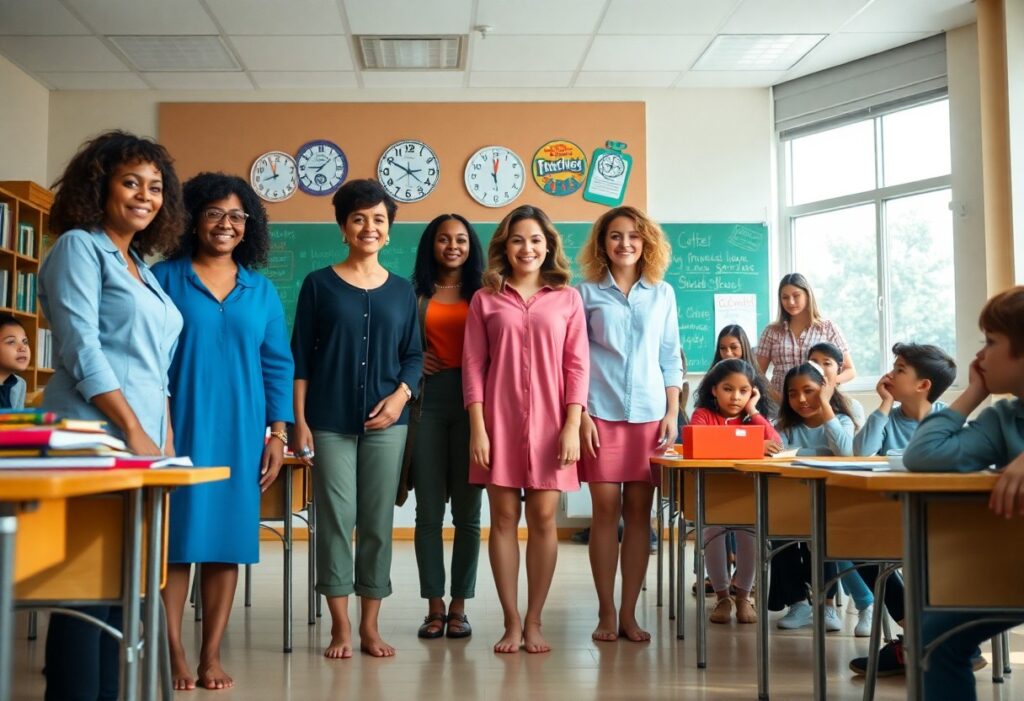
As a dedicated educator, your daily tasks often require you to be on your feet for extended periods, which can lead to fatigued and sore feet. You are likely aware of how vital comfortable footwear is to your routine, yet the shoes you believe offer the best comfort may actually be exacerbating your discomfort. By making the shift to barefoot shoes, you can experience significant benefits such as improved mobility, balance, and agility. Over time, these shoes can strengthen your feet, allowing them to serve as their own support system.
Recognizing the Physical Strain of Teaching: The Importance of Foot Health
Your daily responsibilities as a teacher entail extensive standing, walking, and active engagement, which can impose substantial strain on your feet, leading to foot pain and exhaustion. Since you spend a considerable part of your day upright, it’s crucial to evaluate how your daily activities affect your foot health. Emphasizing the right footwear choice can significantly alleviate the physical stress stemming from the demands of your role, promoting a healthier and more comfortable work environment.
Understanding Daily Teaching Activities and Their Foot Health Implications
Throughout your busy hours filled with standing, walking, and moving around the classroom, your feet may become overworked and stressed, resulting in discomfort and pain. As an educator, you are fully aware of the necessity to be on your feet all day, but you may not fully grasp the long-term consequences of wearing shoes that lack proper support. Recognizing these effects is essential for making informed decisions about footwear that fosters sustainable foot health.
The Critical Role of Comfortable Footwear in Enhancing Teacher Performance
For educators, selecting the right shoes is crucial to prevent foot-related issues and ensure overall comfort throughout the school day. You need footwear that accommodates your active lifestyle while providing the necessary support and cushioning for your feet. Prioritizing comfort not only enhances your ability to interact with students but also enables you to manage classroom activities with greater effectiveness and ease.
What exactly constitutes comfort in shoes for teachers? It goes beyond mere cushioning and support; it also includes allowing your feet to move naturally and breathe. When assessing your options, look for shoes that are breathable, lightweight, and flexible, with a wider toe box to provide ample space for your toes to spread comfortably. By investing in the ideal footwear, you can significantly reduce the likelihood of foot pain and injury, enabling you to stay comfortable and focused throughout your teaching day.
Key Features to Look for in Comfortable Footwear for Teachers
As a professional educator, the choice of your shoes plays a crucial role in ensuring your daily comfort and performance. You need footwear that provides excellent support and comfort throughout the day, allowing you to concentrate on your students and lesson plans without the distraction of discomfort or pain.
Essential Characteristics for Long-Lasting Comfort in Teachers’ Footwear
Given the demanding nature of a teaching career, it’s clear that shoes featuring breathability, lightweight materials, and flexibility are vital for enduring comfort. Your footwear should keep your feet dry and cool, even after long hours of standing and moving around, helping you to maintain energy and focus during your teaching activities.
Benefits of Choosing Breathable, Lightweight, and Flexible Shoes
As an educator, your dedication to providing the best educational experience for your students starts with addressing your own comfort. You seek footwear that allows for unrestricted movement and promotes natural foot mechanics, and breathable, lightweight, and flexible shoes can provide these essential benefits.
To achieve optimal comfort and performance, choose shoes that are not only breathable but also lightweight and flexible. This combination enables you to navigate your classroom and hallways effortlessly, without feeling restricted or weighed down. Additionally, proper ventilation is essential, as it helps keep your feet dry and cool, minimizing the risk of blisters and other foot-related issues. By selecting footwear with these vital features, you can ensure that your feet remain comfortable and supported throughout your busy day, allowing you to focus on what truly matters—delivering exceptional education to your students. With breathable, lightweight, and flexible shoes, you can say goodbye to fatigued, sore feet and embrace a more enjoyable and productive teaching experience.
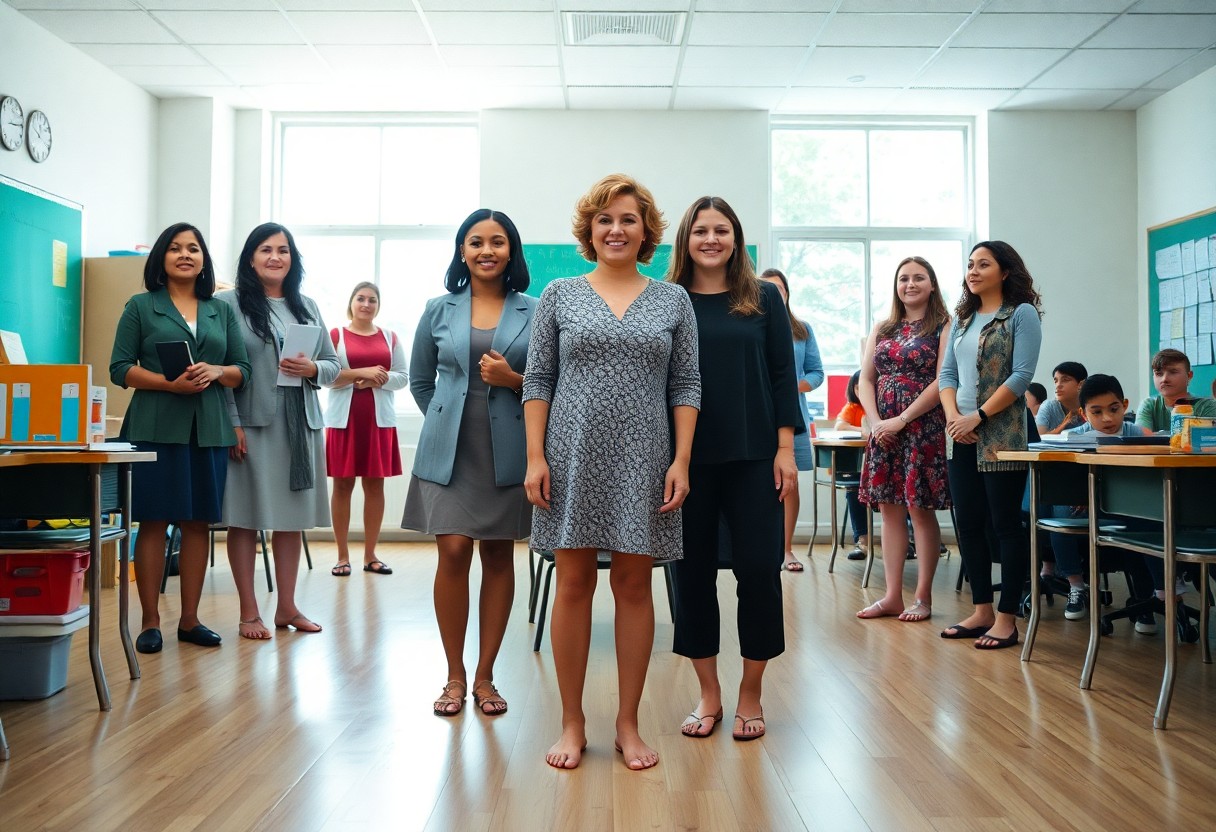
Comparing Conventional Footwear with Barefoot Shoes: What You Need to Know
If you are considering transitioning to barefoot shoes, it’s essential to compare them with conventional footwear. The following table highlights the main differences:
| Conventional Shoes | Barefoot Shoes |
|---|---|
| Narrow toe box | Wider, foot-shaped toe box |
| Raised heel | Non-elevated heel |
| Thick soles and excessive padding | Thin soles and minimal padding |
Identifying the Limitations of Traditional Shoes and Their Consequences for Foot Health
It is well-established that traditional footwear can lead to various foot issues due to their constricting narrow toe boxes and elevated heels, resulting in discomfort and balance problems. Wearing such shoes can lead to fatigue and pain not just in your feet, but also in your ankles, knees, and back, impacting your overall mobility and well-being.
Discovering How Barefoot Shoes Benefit Educators’ Foot Health
Transitioning to barefoot shoes can enhance your mobility and balance, while also reducing foot fatigue. These shoes encourage natural foot movement, which aids in strengthening your feet and improving your overall posture.
While traditional footwear can be detrimental to your foot health, barefoot shoes present beneficial alternatives. Wearing barefoot shoes can foster natural and comfortable movement, significantly improving your overall well-being. As an educator, you will value the comfort and support that barefoot shoes provide, allowing you to focus on delivering quality education without being hindered by foot pain.
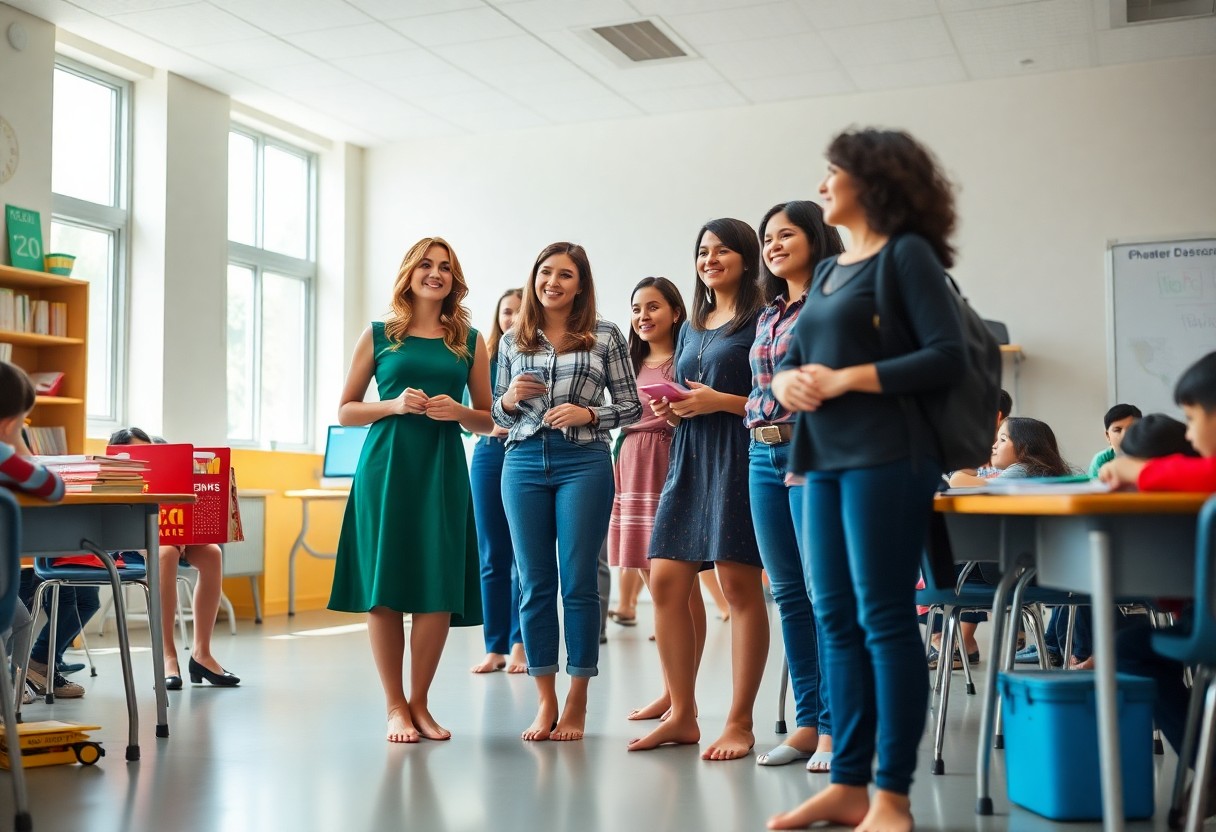
Unveiling the Significant Advantages of Barefoot Shoes for Educators
In contrast to conventional footwear, barefoot shoes offer a plethora of advantages for teachers. These include increased mobility, enhanced balance, improved agility, and the fortification of your feet over time, all of which contribute to better overall foot health and reduced discomfort.
Boosting Mobility, Balance, and Agility Within the Classroom
In the classroom setting, you will discover that barefoot shoes allow for a full range of motion, enabling you to move more fluidly and comfortably. This natural movement can help reduce the likelihood of accidents and injuries during your active teaching hours.
Encouraging Foot Strengthening Through Natural Movement
To cultivate stronger feet, it’s essential to engage in natural movements, and barefoot shoes promote this by not providing external arch support. Relying too heavily on conventional support can lead to weaker feet over time, which may hinder your ability to perform effectively in the classroom.
Strengthening your feet can lead to numerous advantages, including improved posture, a reduced risk of ankle, knee, hip, and back problems, and enhanced overall mobility. This will make it easier for you to carry out daily teaching tasks, such as standing for prolonged periods, walking, and actively engaging with students.
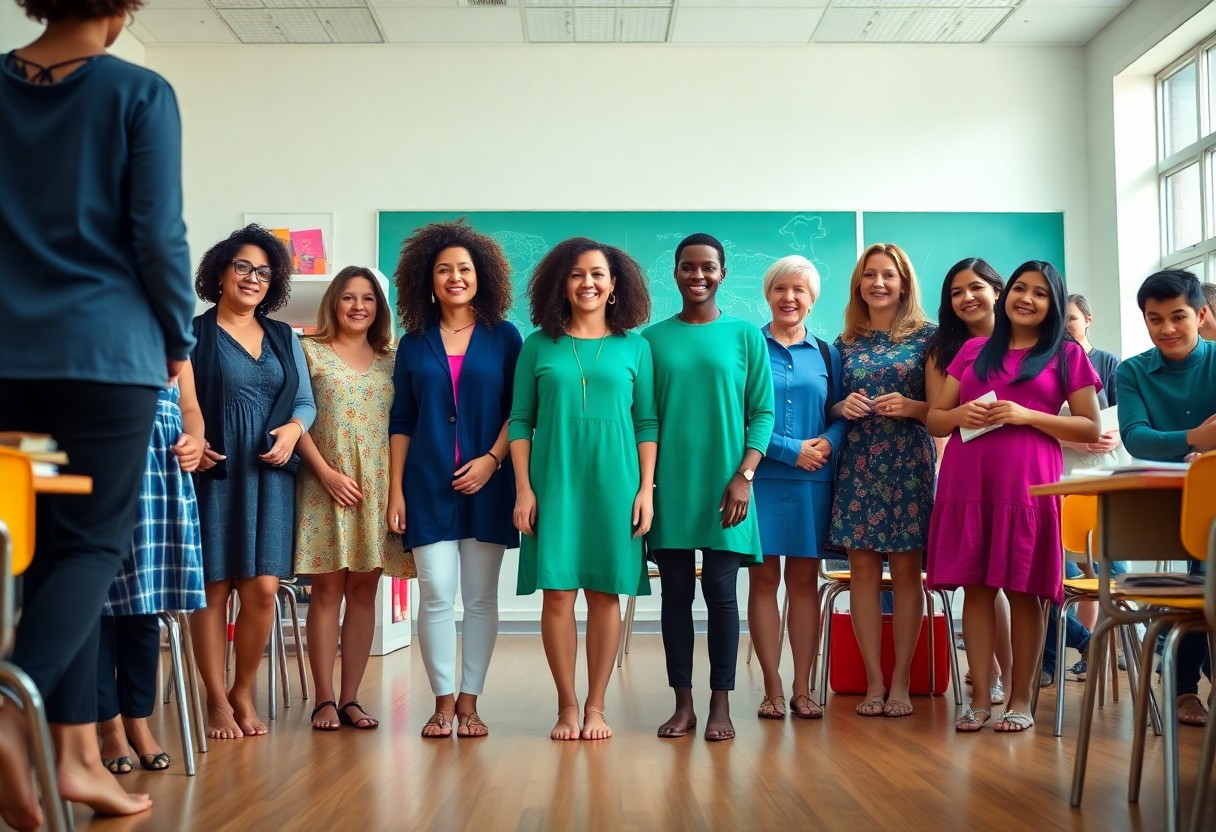
Insights from Real Educators: Experiences with Barefoot Shoes
Your experience with barefoot shoes can be deeply influenced by the comfort and support they provide, ultimately enabling you to move freely and maintain proper posture throughout your workday.
Inspiring Testimonials from Educators Who Embraced Barefoot Shoes
Feedback from fellow teachers highlights that barefoot shoes have effectively improved balance, mobility, and agility, making them a favored choice among educators seeking better foot health.
Experience the Comfort and Support Offered by Barefoot Shoes
Before transitioning to barefoot shoes, you may have struggled with chronic foot pain and discomfort caused by traditional footwear.
Indeed, barefoot shoes offer a wider toe box and a non-elevated heel, which can greatly enhance your posture and alleviate strain on your ankles, knees, hips, and back. By promoting natural movement, you can enjoy lasting comfort and support. This is particularly essential for teachers who are consistently on their feet throughout the day.
Finding the Ideal Barefoot Shoes Tailored to Your Needs
For educators, selecting the right barefoot shoes is vital for ensuring comfort and support during the long hours spent in the classroom. You need footwear that encourages efficient movement, is breathable, lightweight, and flexible, while also providing sufficient toe space.
Professional Dress Shoes That Meet Educational Standards
When dressed in professional attire, it’s important for your shoes to complement your sophisticated style. Look for dress shoes such as Phoenix leather or Mika that meet your school’s formal dress criteria while also providing the comfort and advantages associated with barefoot footwear.
Casual Footwear Options for Everyday Comfort
In more relaxed environments, you can choose casual shoes that still deliver exceptional comfort. Styles like Dillon, Glenn, and Kelso are excellent options that pair nicely with both jeans and slacks, providing a stylish yet comfortable appearance.
What distinguishes these casual shoes are their remarkable arch support and trampoline-like soles, which offer a sensation akin to walking on clouds. With barefoot shoes, you can eliminate foot pain and discomfort, embracing happy feet that keep you energized all day. As a teacher, you will appreciate the breathability and lightweight design of these shoes, making them ideal for long hours on your feet.
Key Takeaways on the Advantages of Barefoot Shoes for Educators
At this point, it’s evident that barefoot shoes are an exceptional choice for teachers, offering a wide range of benefits including enhanced mobility, improved balance, and increased agility. Switching to barefoot shoes can lead to better foot health and reduced discomfort, as they allow your feet to move naturally and strengthen over time. With a variety of minimalist dress and casual shoes available, you can easily find the perfect pair that aligns with your school’s dress code while ensuring your feet remain comfortable throughout the day.
Frequently Asked Questions About Barefoot Shoes for Teachers
Q: What specific benefits do barefoot shoes offer for educators?
A: Barefoot shoes offer numerous advantages for teachers, such as enhanced mobility, balance, and agility. They encourage natural movement, strengthen the feet over time, and support better posture. Additionally, barefoot shoes are lightweight, breathable, and flexible, making them ideal for educators who spend extensive hours on their feet.
Q: How do barefoot shoes differ from traditional footwear for educators?
A: Barefoot shoes are fundamentally different from conventional footwear. They feature a wider, foot-shaped toe box, a non-elevated heel, and lack external arch support. This unique design promotes natural movement, improves posture, and strengthens the feet. On the other hand, traditional shoes are often narrower, have raised heels, and excessive padding, contributing to discomfort, poor posture, and weakened feet over time.
Q: What essential features should educators prioritize when selecting barefoot shoes?
A: Educators should focus on barefoot shoes that are breathable, lightweight, and flexible. Key features include a wide, foot-shaped toe box and a non-elevated heel. Additionally, comfort, durability, and style should be considered to comply with the school’s dress code. Popular options include Phoenix leather, Mika, Dillon, Glenn, and Kelso styles, catering to both men and women and easily styled for various professional settings.
The Article Are Barefoot Shoes the Best Choice for Teachers? Discover the Benefits of Going Minimal appeared first on My Shoes Finder
The Article Barefoot Shoes: Why Teachers Should Consider Minimal Footwear Was Found On https://limitsofstrategy.com

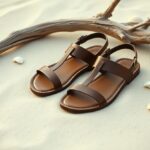
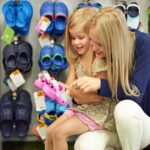





Comments are closed